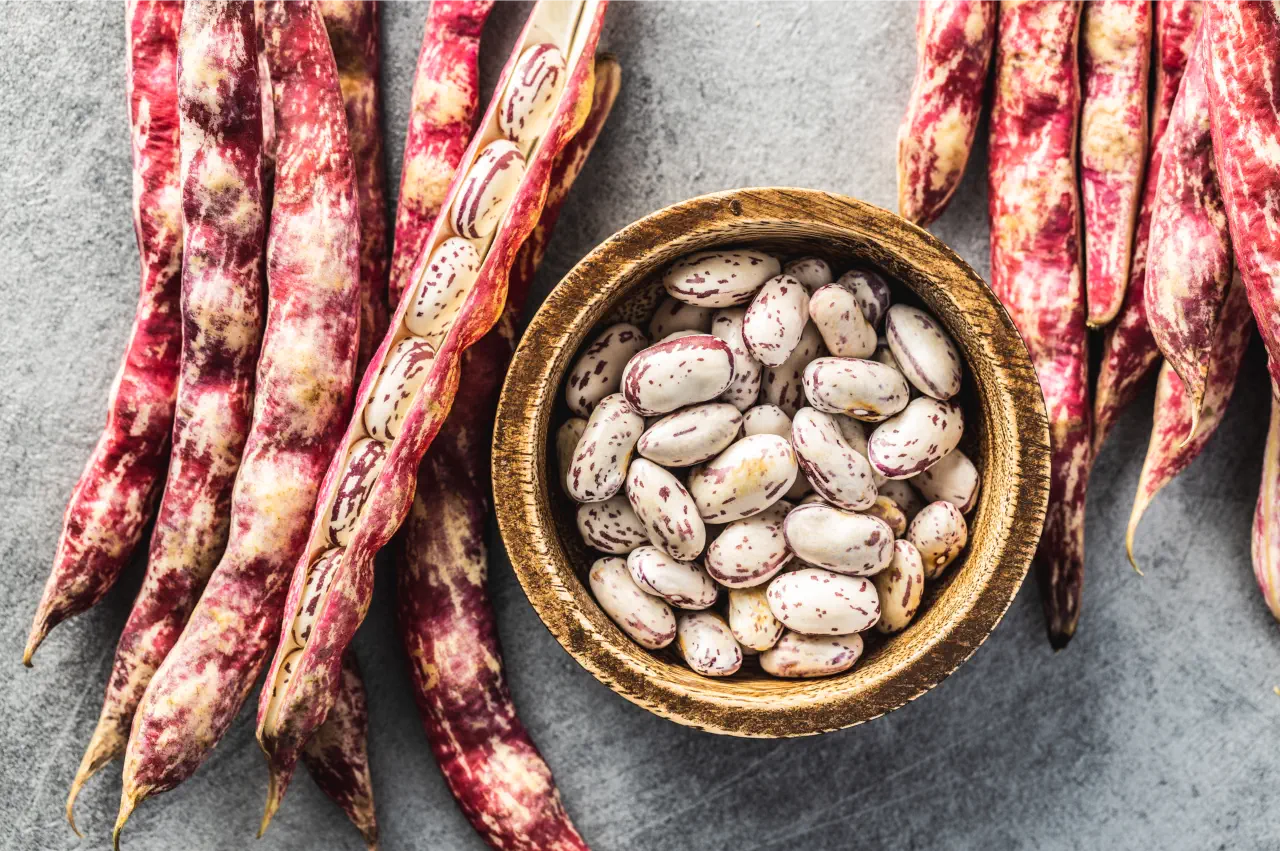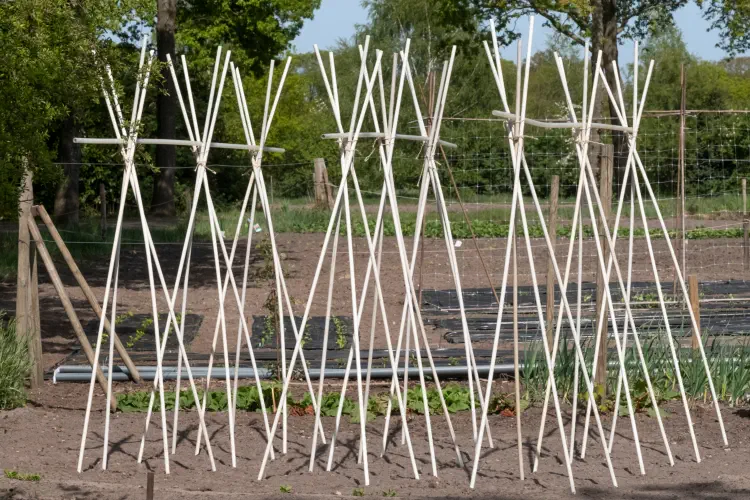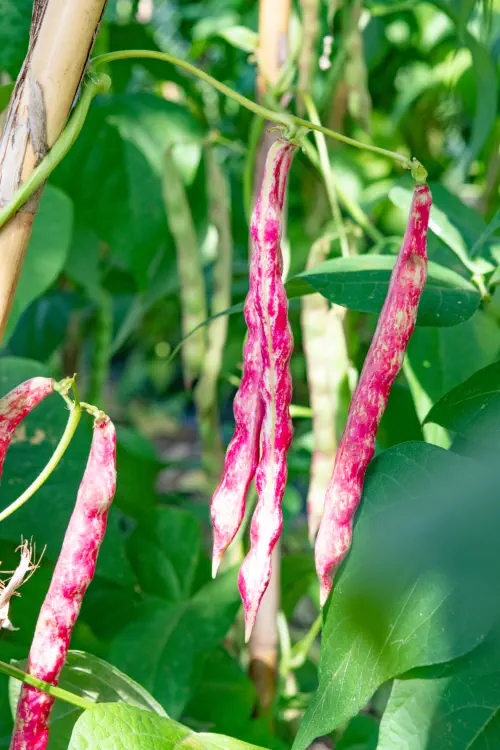Blight can wipe out your crop. Choosing the right blight resistant seed potatoes is crucial for a healthy harvest.
Read on to find out the top varieties of blight resistant seed potatoes that will save your yield....

Are you wanting to grow Borlotti beans? Have you been considering how to sow them for the best harvest? This guide covers it all from choosing the right varieties to harvesting your crop. Follow our tips for a big harvest.
Choosing the right borlotti bean variety is key to a good harvest, tall or bush like to fit any garden space.
Good garden prep, well drained soil and full sun is the foundation for healthy borlotti beans.
Regular care, watering, pest management and harvesting will give you a big and good yield of borlotti beans.
Choosing the right variety of borlotti beans is the first step to a good harvest. Borlotti beans come in both tall and bush like varieties, each with its own advantages. Tall varieties are great for maximum yield in small spaces as they grow upwards and produce more beans. Bush like varieties are low maintenance and easy to manage, perfect for beginners.
In cooler climates you’ll need to choose varieties that can tolerate cooler conditions. One of the most popular is Borlotto Lingua di Fuoco, it’s high yielding and cool tolerant. Choosing the right variety is the foundation for a big and productive bean harvest.
Good garden prep is needed to see your borlotti beans grow. Borlotti beans love well drained, light soil with organic matter. Full sun is required as these beans need full sun to grow.
Know the soil requirements and where to plant your beans and they’ll grow in the best conditions.
Borlotti beans love well drained soil, which is the key to preventing waterlogging and healthy root growth. Light soil types are best as they allow roots to grow freely and access nutrients more easily. Before planting add organic matter like well rotted manure or garden compost to the soil to increase fertility. This will improve the soil structure and provide nutrients for healthy plant growth.
Don’t over fertilise with nitrogen as this will promote leaf growth at the expense of flowers and beans. Use a balanced organic fertiliser to promote healthy growth. Adding materials like bone meal and fireplace ashes will provide phosphorus and potassium without adding excess nitrogen.
Good soil prep gives your borlotti beans a solid base to grow.
Borlotti beans success is location dependent. They love the sun and need at least 6 hours of direct sun a day. Make sure your garden bed is not shaded all day. Placing your beans in a sunny spot will not only promote growth but also increase yield.
Spacing gives room to grow and prevent overcrowding. Plant your beans at least 25cm apart so each plant has enough room to grow. This spacing will improve air circulation, reduce the risk of fungal diseases and allow each plant to get enough sun.
Right location and spacing is the perfect environment for your borlotti beans to grow.
Now you’re ready to plant your borlotti beans. Timing and technique is key to healthy growth and big harvest.
Timing and technique will get your beans growing.
Sow borlotti beans at the right time and they’ll thrive. They love warm soil, 20-30 °C (70-90°F) is ideal. Best time to plant is after the last spring frost, usually late spring. Wait until the soil has warmed up and your seeds will germinate and grow well.
Planting too early when the soil is cold can result in poor germination and weak growth. Sow in a sunny and warm spot so your seeds get the best start. Following these guidelines will get you growing healthy and productive borlotti beans.
When sowing borlotti beans direct into the soil is the best method. Sow the seeds 2-5cm (1-2 inches) deep and 10-15cm (4-6 inches) apart. This spacing will give each plant enough room to grow and access nutrients without competing with its neighbours.
Row spacing should be about 30 inches so you can easily weed, water and harvest. Make sure your supports (bamboo poles or garden twine) are in place at the time of planting so you don’t damage the young plants later on.
Good sowing technique will give your growing borlotti beans the best chance to grow borlotti beans will thrive.
Supporting borlotti bean plants will promote healthy growth and prevent damage. Proper supports will help the plants climb and get enough sun and will give you a bigger harvest.
Find the best climbing supports and companion planting benefits for your climbing beans to grow strong and healthy.

Climbing supports are necessary for tall borlotti bean varieties. Common supports are bamboo poles, traditional bean poles tied with garden twine and A-frame structures. These supports will help the plants climb upwards, improve air circulation and reduce pest damage.
Set up your supports at planting time so you don’t disturb the roots later on. As the bean plants grow they will naturally wrap around the supports and will reach up to 24 inches (61cm) high.
Strong climbing supports will get your borlotti beans to grow tall.
Companion planting is a great way to get more growth and yield from your borlotti beans and reduce pest problems. Good companions for borlotti beans are carrots, cucumbers and strawberries. They will improve soil health, attract beneficial insects and provide natural pest control.
But be careful what you plant near your borlotti beans. Don’t plant onions and garlic close by as they will stunt your beans growth.
Choosing the right companion plants will create a balanced garden ecosystem for your borlotti beans.
Regular care will keep your borlotti bean plants healthy and productive. From watering and feeding to pest and disease management, every aspect of care is important for your bean plants.
Knowing the details of watering, feeding and pest management will keep your beans growing.
Consistent watering is critical for borlotti beans especially during flowering and pod formation. Drip irrigation is the best method as it delivers water directly to the root zone, reduces water waste and ensures the plants get the moisture they need.
Feed your plants with a balanced fertiliser high in phosphorus and potassium and you will see a big growth boost. High potash fertilisers are best used in the early stages of growth. Proper spacing between plants will also improve air circulation and sunlight penetration which are important for healthy growth.
Pest and disease management is important for your borlotti beans. Companion planting will attract beneficial insects that will help control pests. Mulching will keep the pods off the soil and prevent them from rotting and reduce the risk of fungal infections.
Companion planting and mulching will manage pests and diseases in borlotti beans. These preventative measures will keep your plants healthy and productive all season.

Harvesting borlotti beans at the right time is key to getting the best flavour and quality. Knowing when and how to harvest your beans will make a big difference to your overall yield.
Knowing the signs to pick your beans and how to store dried beans are important.
Harvest borlotti beans at the right time for the best flavour and texture. For fresh use pick the pods when they are green but firm. For dried beans wait until the pods have dried on the plant and turned tan.
Most borlotti beans produce all at once so it’s easier to know when to harvest. For Borlotto Lingua di Fuoco the pods turn deep purple when the beans are ready to store.
Follow these and you will have harvested at the best.
After harvesting dry your borlotti beans completely to prevent mold. The beans should be dry until they are hard and cannot be dented with a thumbnail. Proper drying will keep the beans quality and can be stored for long time.
Store the dried beans in an airtight container in a cool dry place. When stored properly dried borlotti beans can last up to a year and you will have a nutritious and versatile ingredient for months to come.
Follow these and you will preserve your harvest.
Borlotti beans are a staple in Italian cuisine, sweet and creamy. They can be used in baked beans, salads, stews, soups and bean dips. They are very versatile and can be added to casseroles and salads and will add richness to your meals.
Young borlotti bean pods can also be eaten as runner beans and will be a fresh and tender option for your recipes. Whether you want to boost a stew or make a bean dip borlotti beans are a great addition to any dish.